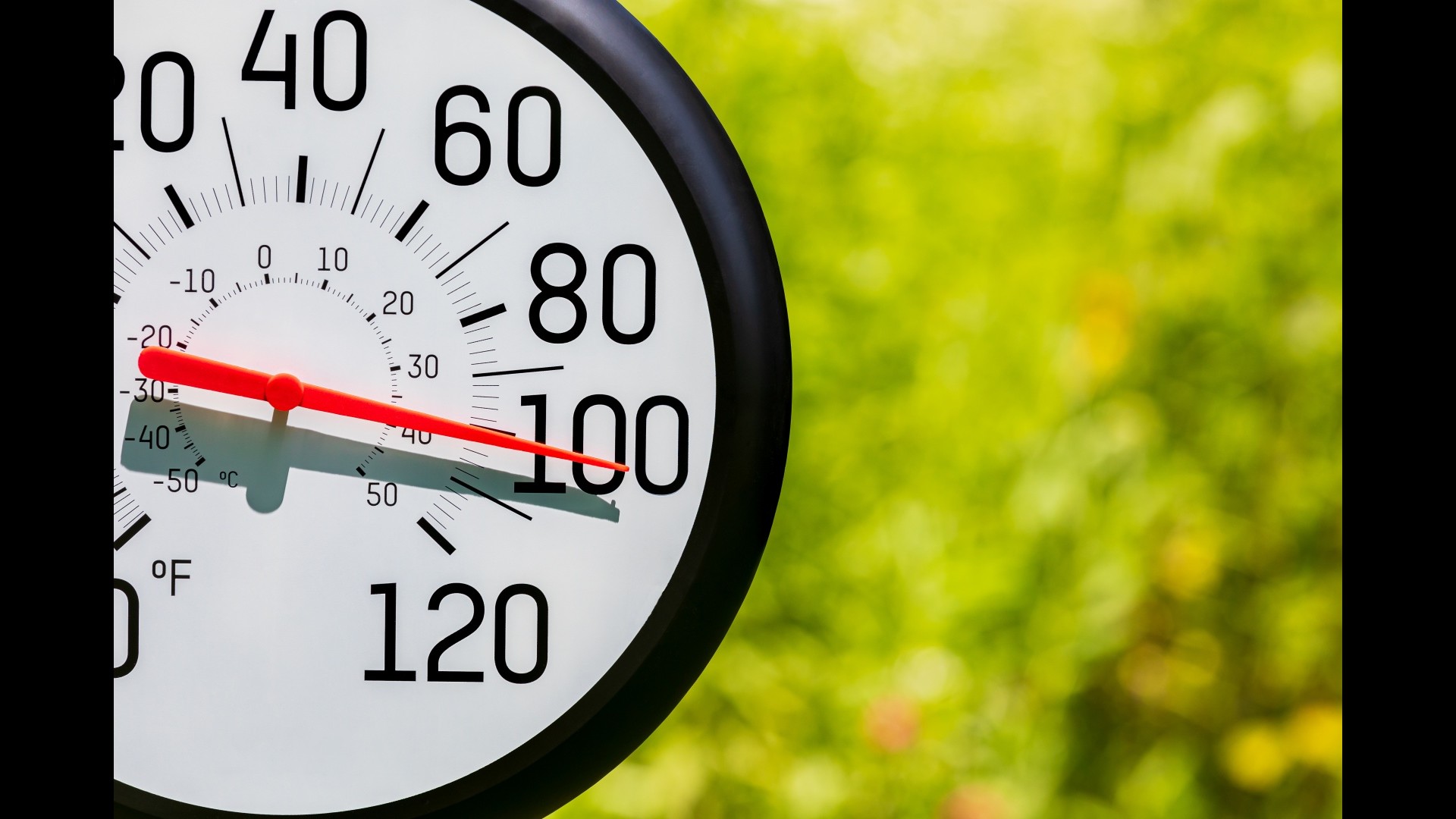
With much of the Midwest and the Northeast broiling — or about to broil — in extreme summer heat this week, meteorologists are talking about heat waves and heat domes.
Both mean it's really hot — and people will hear those terms a lot more as the world heats up. What's the difference?
Here's what to know:
What's a heat dome?
We've got the news you need to know to start your day. Sign up for the First & 4Most morning newsletter — delivered to your inbox daily. Sign up here.
It’s helpful to think of a heat dome as what’s happening in the atmosphere. A heat wave is how that affects people on the ground, said Ken Kunkel, a research professor of atmospheric sciences at North Carolina State University.
When a high-pressure system develops in the upper atmosphere, it causes the air below it to sink and compress. That raises temperatures in the lower atmosphere.
Because hot air expands, it creates a bulging dome.
The boundaries of this week's heat dome are not well-defined, Kunkel said, but the National Weather Service has said that the most extreme heat is expected in the Ohio Valley and the Northeast.
The eastern heat dome follows an earlier-than-usual one this month in the Southwest. Last year, there were 645 heat-related deaths in Phoenix.
What is a heat wave?
A heat wave is defined by how intense the heat is, how long it lasts and where it occurs, said Jeff Masters, a meteorologist with Yale Climate Connections.
In general, several days of 90-plus degree temperatures in Texas are “no big deal," Masters said. Farther north, it is forecasted to be in the mid- to high-90s over the Midwest and Northeast this week, with heat indices of 100 F (38 C) or greater.
"The population’s just not conditioned to that sort of heat,” he said.
The National Weather Service said that some areas likely will reach daily records, with the heat wave lasting all week and into the weekend in some places.
The combination of clear skies and the higher summertime angle of the sun can result in high heat index readings, a measure of temperature combined with humidity. Humidity makes the weather feel hotter because the body cools itself by sweating and has to work harder when the air’s already moist.
Extreme heat sends 11 to hospital outside Arizona Trump rally
The Detroit area will be in the mid-90s, with a heat index around 100 Fahrenheit (38 C) in some urban areas for the next few days. The normal high temperature for this time of year in Detroit is in the low 80s. Specifically, June 18th’s normal high is 81 F, meteorologist Brian Cromwell said.
Chicago broke a 1957 temperature record on Monday with a high of 97 degrees F (36.1 degrees C). Hot and muggy conditions will continue this week, with peak heat indexes near 100 F (38 C), said the National Weather Service in Chicago.
In Cincinnati, Ohio, Tuesday’s high will be around 96 F (36 C), but will feel like 104 F (40 C), according to the weather service. The high heat will continue through the weekend.
Albany, New York, will see temperatures of 95 F (35 C) or hotter from Tuesday through Thursday, when it will peak at 97 F (36 C), with heat indexes at 100 F (38 C) or more, the weather service forecasted. New York Gov. Kathy Hochul said Tuesday that she has activated the National Guard to assist in any heat emergencies.
The U.S. last year experienced the most heat waves since 1936, experts said. An Associated Press analysis of Centers for Disease Control and Prevention data found that the excessive heat contributed to more than 2,300 U.S. deaths, the highest number in 45 years of records.
Who's under the heat dome?
The heat dome will affect a broad swath of the eastern half of the country, from roughly the Great Plains states up through Maine.
Some locations could see their hottest temperatures on record for any month, Masters said. A new study found that climate change is making giant heat waves move more slowly and affect more people for a longer time, with higher temperatures over larger areas.
Almost 77 million people in the United States were under extreme heat alerts Tuesday.
Another excessive heat warning, caused by a heat dome, is expected in the Phoenix area on Thursday and Friday, when the highs could reach 114 F (45.5 C) and 116 F (47 C), respectively, said National Weather Service meteorologist Ted Whittock. Tuesday’s forecasted high of 105 F (40.5 C), meanwhile, is normal for this time of year.
He said his office has issued two excessive heat warnings in the past few weeks because of higher-than-normal high pressure that created heat domes.



